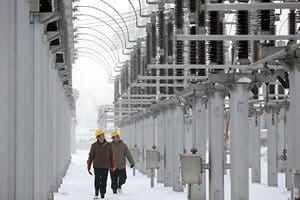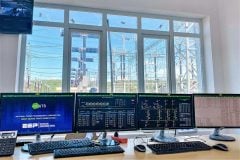
Substation Equipment and Earthquake
To secure and protect substation equipment from damage due to a seismic event, the relationship between earthquakes and substation components must first be understood.
Earthquakes occur when there is a sudden rupture along a preexisting geologic fault. Shock waves that radiate from the fracture zone amplify, and depending on the geology, these waves will arrive at the surface as a complex set of multifrequency vibratory ground motions with horizontal and vertical components.
The response of structures and buildings to this ground motion depends on their construction, ductility, dynamic properties, and design.
Lightly damped structures that have one or more natural modes of oscillation within the frequency band of the ground motion excitation can experience considerable movement, which can generate forces and deflections that the structures were not designed to accommodate.
Mechanisms that absorb energy in a structure in response to its motion can help in damping these forces.
If two or more structures or pieces of equipment are linked, they will interact with one another, thus producing a modified response. If they are either not linked, or linked in such a way that the two pieces can move independently – an ideal situation – then no forces are transferred between the two components.
However, recent research has shown that even a well-designed link may contribute to the response of the equipment or structure during a seismic event. For electrical reasons, most pieces of substation power equipment are interconnected and contain porcelain.
Furthermore, unless instructed to do otherwise, construction personnel will install conductors with little or no slack, which gives the installation a neat and clean look. This practice does not allow for any freedom of movement between components. When the conductor is installed with little or no slack, even small differential motions of one piece of equipment can easily impact an adjacent piece of equipment. This is because each piece of interconnected equipment has its own frequency response to an earthquake. While the equipment at one end of a tight conductor line is vibrating at 1 Hz, for example, the other piece of equipment at the other end of the conductor is “trying” to vibrate at, say, 10 Hz. It is easy to see that when they vibrate toward each other, the line will go slack.
When they vibrate away from each other, the line will suddenly snap tight, which will impact the equipment. This is a well-documented occurrence. Usually, the larger, more massive equipment will pull the smaller, weaker equipment over.
Substation equipment with natural frequencies within the range of earthquake ground motions are especially vulnerable to this type of damage by seismic events.
SOURCE: R.P. Stewart, Rulon Fronk, Tonia Jurbin from BC Hydro










